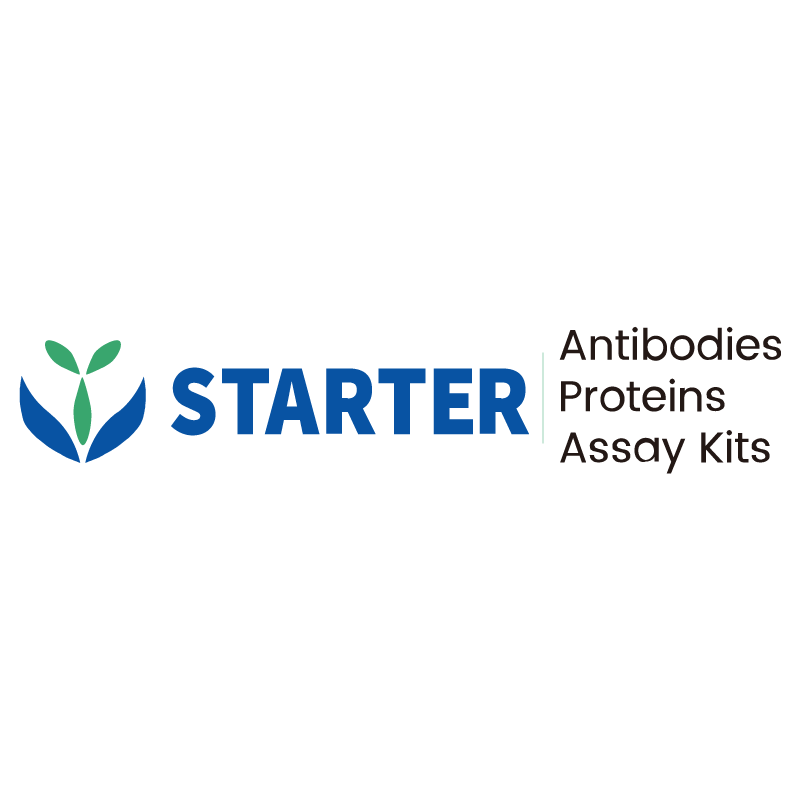WB result of VGLUT3 Recombinant Rabbit mAb
Primary antibody: VGLUT3 Recombinant Rabbit mAb at 1/250 dilution
Lane 1: unboiled mouse hippocampus lysate 20 µg
Secondary antibody: Goat Anti-rabbit IgG, (H+L), HRP conjugated at 1/10000 dilution
Predicted MW: 66 kDa
Observed MW: 68 kDa
This blot was developed with high sensitivity substrate
Product Details
Product Details
Product Specification
| Host | Rabbit |
| Antigen | VGLUT3 |
| Synonyms | Vesicular glutamate transporter 3; VGluT3; Solute carrier family 17 member 8; Slc17a8 |
| Immunogen | Recombinant Protein |
| Location | Cell membrane, Synapse |
| Accession | Q8BFU8 |
| Clone Number | S-2430-26 |
| Antibody Type | Recombinant mAb |
| Isotype | IgG |
| Application | WB, IHC-P |
| Reactivity | Ms, Rt |
| Positive Sample | Mouse hippocampus, mouse brain, rat hippocampus, rat brain |
| Purification | Protein A |
| Concentration | 0.5 mg/ml |
| Conjugation | Unconjugated |
| Physical Appearance | Liquid |
| Storage Buffer | PBS, 40% Glycerol, 0.05% BSA, 0.03% Proclin 300 |
| Stability & Storage | 12 months from date of receipt / reconstitution, -20 °C as supplied |
Dilution
| application | dilution | species |
| WB | 1:250 | Ms |
| IHC-P | 1:500 | Ms, Rt |
Background
VGLUT3 (Vesicular Glutamate Transporter 3) is a 60-kDa multi-pass transmembrane protein encoded by the SLC17A8 gene that packages glutamate into synaptic vesicles for activity-dependent release, but unlike VGLUT1 and VGLUT2 it is expressed primarily in neurons that were traditionally considered non-glutamatergic—such as cholinergic striatal interneurons, serotonergic raphe neurons, and GABAergic interneurons—thereby enabling co-transmission of glutamate with acetylcholine, serotonin, or GABA; VGLUT3 also localizes to the somatodendritic compartment where it can modulate retrograde signaling, and genetic deletion in mice produces auditory neuropathy, social deficits, and altered pain perception, while human SLC17A8 mutations cause progressive sensorineural deafness (DFNA25), collectively illustrating its critical role in diverse circuits ranging from cochlear ribbon synapses to cortico-striatal networks.
Picture
Picture
Western Blot
Immunohistochemistry
IHC shows positive staining in paraffin-embedded mouse hippocampus. Anti-VGLUT3 antibody was used at 1/500 dilution, followed by a HRP Polymer for Mouse & Rabbit IgG (ready to use). Counterstained with hematoxylin. Heat mediated antigen retrieval with Tris/EDTA buffer pH9.0 was performed before commencing with IHC staining protocol.
IHC shows positive staining in paraffin-embedded mouse cerebral cortex. Anti-VGLUT3 antibody was used at 1/500 dilution, followed by a HRP Polymer for Mouse & Rabbit IgG (ready to use). Counterstained with hematoxylin. Heat mediated antigen retrieval with Tris/EDTA buffer pH9.0 was performed before commencing with IHC staining protocol.
IHC shows positive staining in paraffin-embedded rat hippocampus. Anti-VGLUT3 antibody was used at 1/500 dilution, followed by a HRP Polymer for Mouse & Rabbit IgG (ready to use). Counterstained with hematoxylin. Heat mediated antigen retrieval with Tris/EDTA buffer pH9.0 was performed before commencing with IHC staining protocol.
IHC shows positive staining in paraffin-embedded rat cerebral cortex. Anti-VGLUT3 antibody was used at 1/500 dilution, followed by a HRP Polymer for Mouse & Rabbit IgG (ready to use). Counterstained with hematoxylin. Heat mediated antigen retrieval with Tris/EDTA buffer pH9.0 was performed before commencing with IHC staining protocol.
Negative control: IHC shows negative staining in paraffin-embedded rat spleen. Anti-VGLUT3 antibody was used at 1/500 dilution, followed by a HRP Polymer for Mouse & Rabbit IgG (ready to use). Counterstained with hematoxylin. Heat mediated antigen retrieval with Tris/EDTA buffer pH9.0 was performed before commencing with IHC staining protocol.


